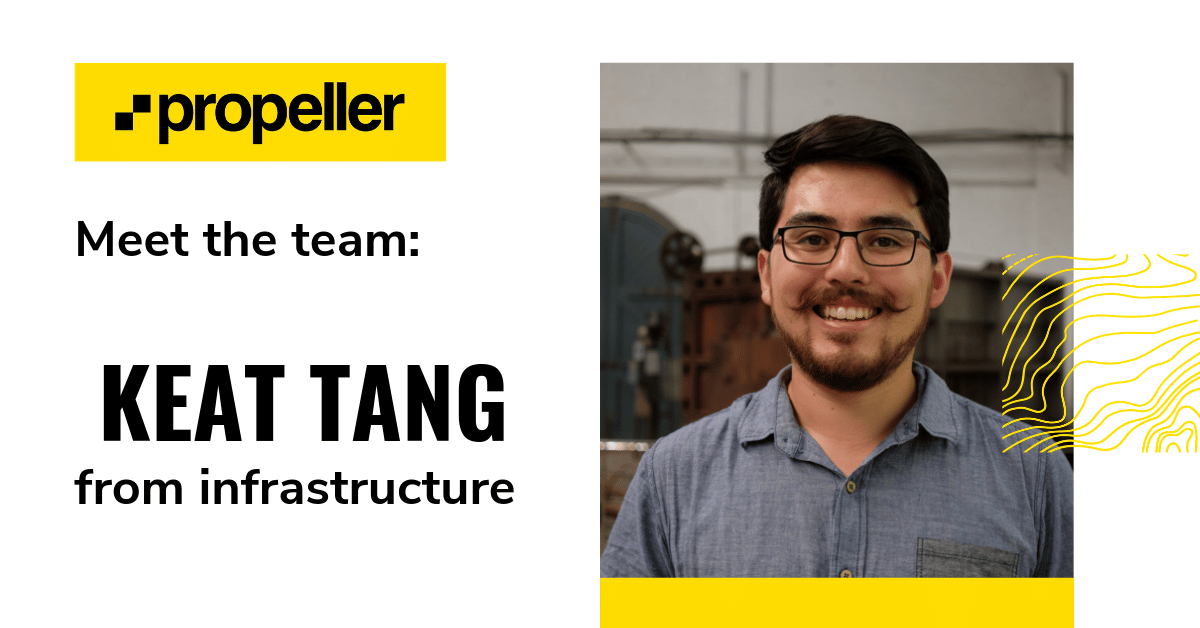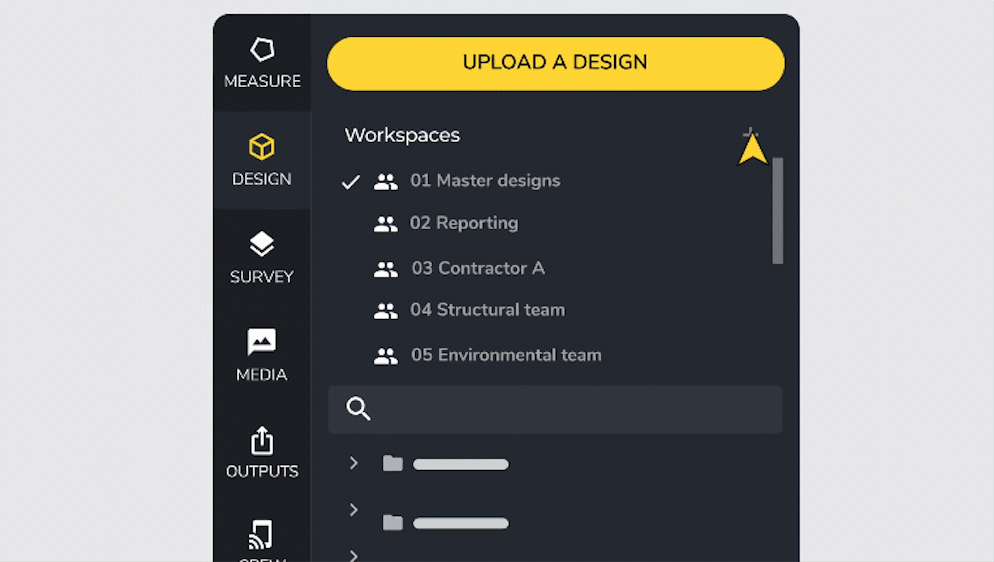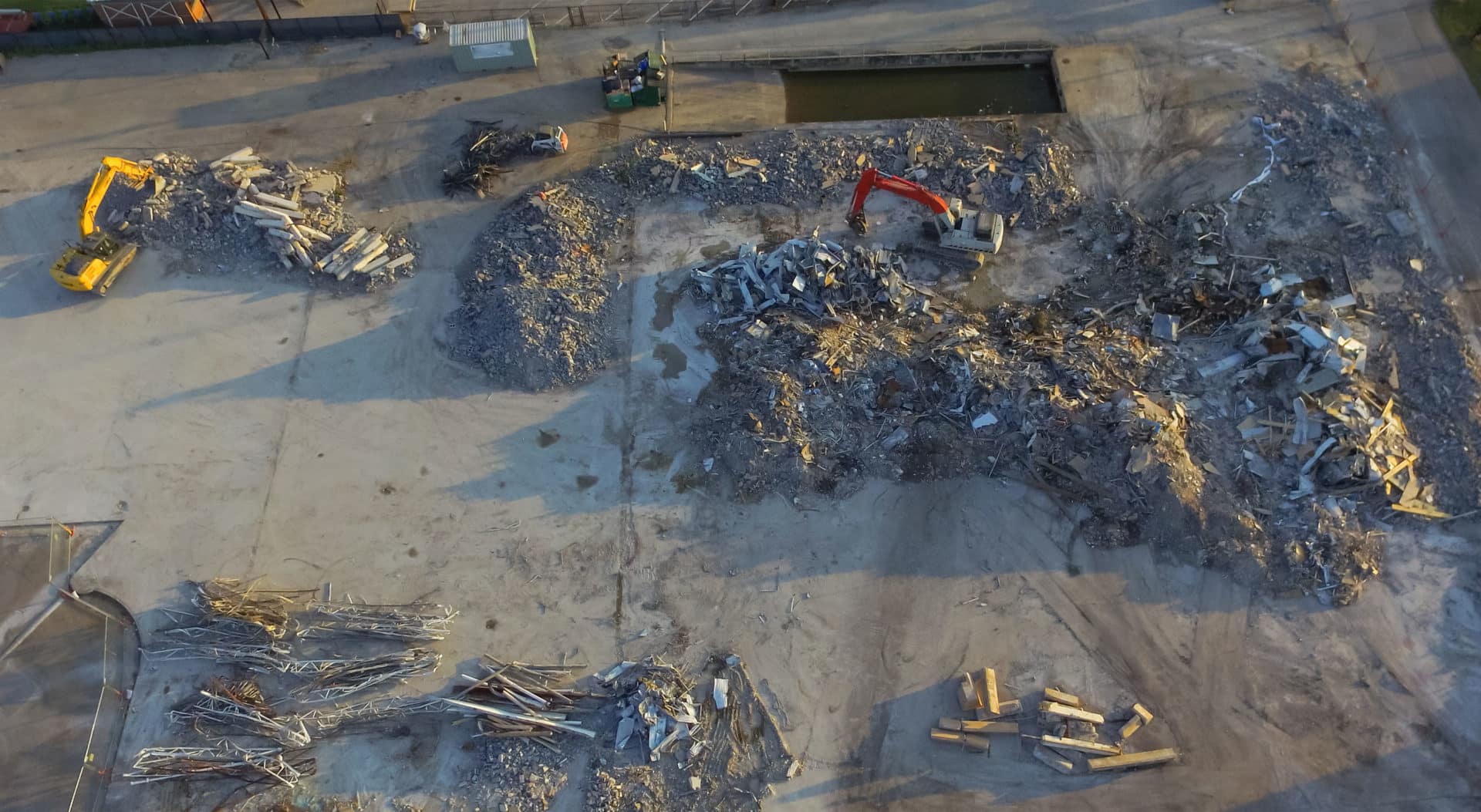Get to know Propeller’s world-class team in our ongoing employee spotlight. Today, we talk to Keat Tang, who is our founding engineer, and currently works on the infrastructure team. Keat (pronounced “kit”) is based in Propeller’s Sydney office.

What do you do at Propeller?
I’m working on the infrastructure team. We build all the backing, infrastructure, and shared services that the teams use to build the Propeller Platform. We build core API services, AWS infrastructure and front-end interfaces. We build the tools that our developers use when they’re locally developing and tools to quickly set up new applications and servers.
We’re currently working on internationalizing the platform, which is a whole lot of fun. We’ve just hired a data scientist, so we’ve also started building out data analytics for the company. Basically, we handle the resources that are shared across teams to run our product.
What’s your career background? What led you to Propeller?
Bit of a happy accident. I studied aerospace engineering. I got out of uni and there were virtually no aerospace jobs in Australia, or at least there weren’t at that time. I was looking around for jobs and not finding anything interesting.
Then I met up with a friend (who now works at Canva). He knew of a couple guys doing a drone startup. Those guys were Francis Vierboom and Rory San Miguel, Propeller’s founders. Turns out, they were all working in the same building, and he knew Rory from uni.
Propeller needed someone who could program and potentially help build drones. I told him I could program and did aerospace engineering, so I could do both of those things. He put me in touch with Rory and Francis, I gave them my CV, had an interview, and got the job. Employee Number Three, if you count our co-founders. I’ve been here ever since.
You were the first real employee at Propeller. What was it like to build the Propeller Platform from scratch?
It was a lot of fun. In the very beginning, we were hacking away at things. A lot of our very first interfaces were super raw, not at all polished. None of us were designers.
For example, in one of the earliest iterations of Propeller, we had a slider that would just float in the top-left corner. We’d use that to opacity slide between two things. So, unless you knew what that slider did, it was just a random element that existed in the middle of nowhere.
Very quickly after I joined, however, we went to Startmate, a startup accelerator in Australia. That was awesome—the first real stride we took into being the company we are today. We joined up with a lot of people, like Richo, who were building out their own startups.
As a part of that program, we went to America to raise money in San Francisco. I remember we stayed in a shared living/working space. It was like a college dorm. Francis and Rory had tons of investor meetings, while me and Barry, an early Propellerite who’s since moved on, would focus on building the Platform.
What are some of the challenges of processing the large volumes of data we have now?
Today, we have so much more data to handle than we imagined back then. A lot of what I do today is about keeping things secure and the pipes flowing.
There’s a lot of infrastructure and monitoring that goes into keeping a system as complex as ours running. Before we expanded, you could have one server and that would be fine. Now, we have more complex systems that autoscale based on load. You also have to architect things differently with as much data as we process. We’re using a bunch of new technologies to help with all these issues.
Where did you grow up?
I lived in Sydney until I was eight, then I moved to New York City for a year, on the Upper East Side. That was really cool; I went to primary school in New York. I learned to ice skate in Central Park and everything.
Then I moved to Orange, a small country town in New South Wales, about three and a half hours west of Sydney, past the Blue Mountains. It was fun living in the county. I had a bunch of good mates and we used to ride around on our bikes all the time, just being menaces, disabling pay phones, and things like that. It was a very wholesome bike gang.
Any talents, secret superpowers, or fun facts about yourself to share?
I’ve an excellent costume box. It grows every year. I have six onesies and some very weird, ridiculous outfits. It’s for all times of the year, not just Halloween. My latest purchase is a blazer covered in reversible sequins.
What’s your favorite Propeller memory?
Our 2018 Thailand trip, for sure. I don’t even know where to start with that. It’s hard to pick even a specific memory from that team retreat because it was just everything, the whole week. It was being able to see everyone, meeting teammates I hadn’t seen in person before—just everything.
What’s your favorite Slack emoji and why?
It’s got to be the Fred one. It’s a custom emoji of a close-up shot of Fred’s face.
What’s one thing you wish people understood better about Propeller as a whole?
Propeller is committed to building great products and doing right by our customers. We may not always get it right on our first try, but when we don’t we’re always working hard to learn from our mistakes and make sure things are always getting better.
What is the biggest change you’ve seen at Propeller since the start?
The number of people and how legit we’ve become. Our onboarding process is a great example of that. Everyone has everything that they need, set up at their desk, when they arrive and receive extensive training in their first few weeks. It’s great. We’ve brought on new people who’ve told me it’s the best onboarding process they’ve ever had. It’s amazing. No typical early startup stuff like not having a chair or desk ready for you.



